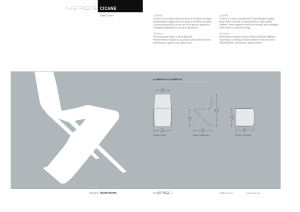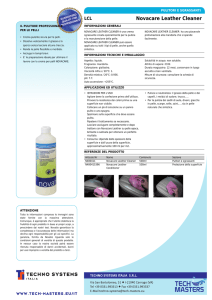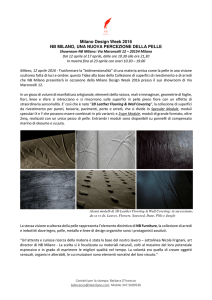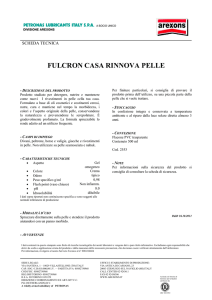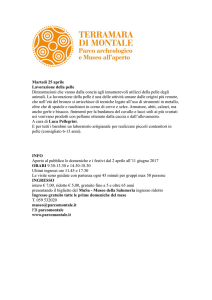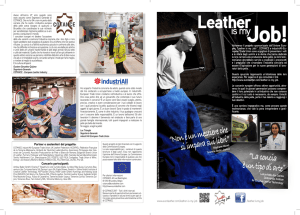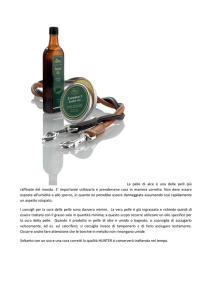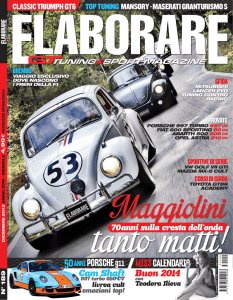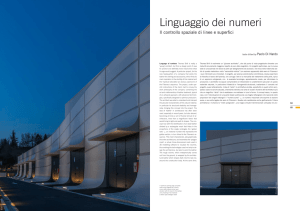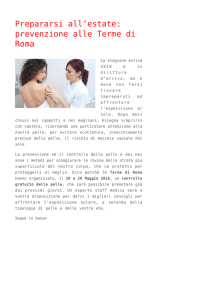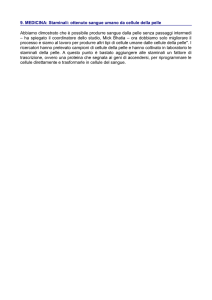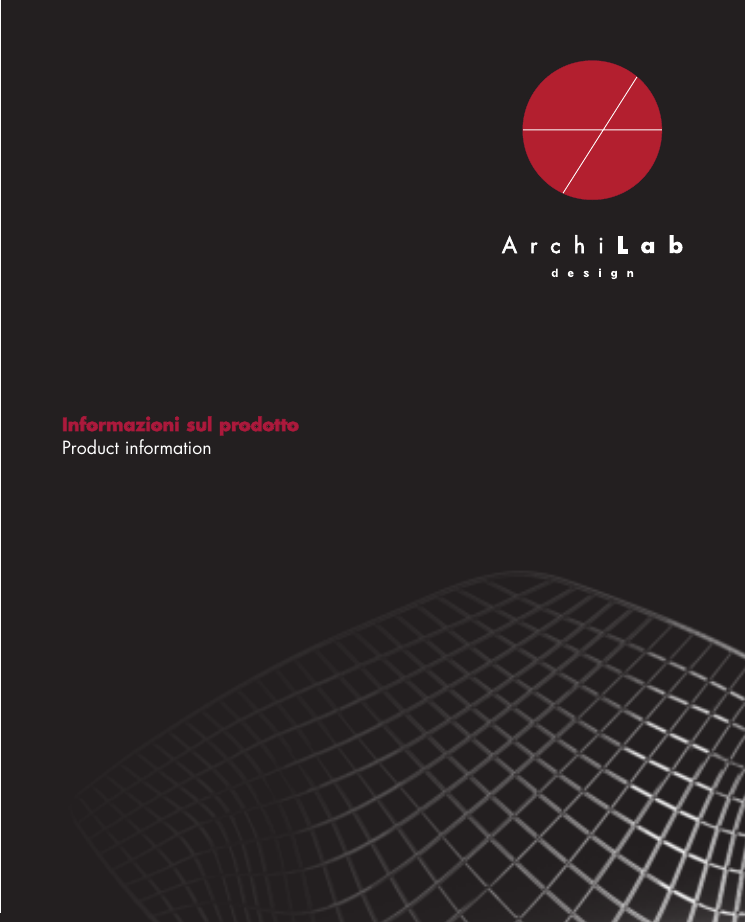
Informazioni sul prodotto
Product information
References
STATI UNITI
U.S.A.
GRAN BRETAGNA
GREAT BRITAIN
BELGIO
BELGIUM
polo ralph lauren boutiques
ahrend offices
banque de luxembourg
polo ralph lauren boutiques
wgz bank
SPAGNA
SPAIN
ITALIA
ITALY
GERMANIA
GERMANY
banco de españa
farmitalia palace
bosh offices
polo ralph lauren boutiques
fipa italiana yachts
abc bank berlin
polo ralph lauren boutiques
bmw head quarters
gruppo editoriale l’espresso
metro goldwyn mayer
enel
siemens offices
FRANCIA
FRANCE
OLANDA
HOLLAND
france telecom
stopera/stadius amsterdam
nc numericable
jaarbeurs utrecht
hotel saint german
gerneentehuls uitgeest
polo ralph lauren boutiques
center parcs holiday-bungalows
casino cap d’antibes
refurbishment
musee des beaux
debitel hoofddorp
arts de nancy
creydon amsterdam
monte carlo bay & resort
radio holland group almere
caudalie
ABN Amro bank
ITALIANO
Informazioni sul prodotto
In conformità alla legge 126 del 10 Aprile 1991 e D.L. 101 del 08 Febbraio 1997
riguardanti le norme per l’informazione del consumatore ed il regolamento di attuazione.
2
ITALIANO
IMBOTTITI
POLTRONE
DIVANI
CHAISE LONGUES
SEDIE
POLTRONCINE
Strutture interne
La maggior parte delle strutture per imbottiti della produzione è composta
da intelaiatura in essenza di legno massello (abete, faggio o similari).
In alcuni prodotti per dare maggiore rigidità alla struttura portante, si introducono all´interno rinforzi in MDF. Le sedute degli imbottiti hanno cinghie
elastiche fissate a croce sulla struttura in legno ad una distanza di 4 o 5
cm l’una dall’altra.
Strutture a vista
I tubi usati sono di prima qualità, garantendo anche dopo la cromatura o
verniciatura una superficie perfettamente liscia. Per le strutture a vista viene
utilizzato l’acciaio cromato o verniciato a polveri epossidiche.
Entrambi i processi hanno una grande resistenza nel tempo. Prima della
cromatura le strutture passano alla decappatura, o meglio, tramite solventi
a freddo le viene tolto il grasso che protegge il ferro dalla ruggine (questo
determina la buona qualità della cromatura e la resistenza del cromo). Solo
dopo la successiva nichelatura le strutture passano alla vera cromatura.
IMBOTTITI
Poliuretano espanso
3
Il poliuretano espanso è un materiale trattato in modo da resistere a muffe
e batteri che si possono formare in ambiente umido. Vengono utilizzate
varie densità di poliuretano adatte a garantire nel tempo elasticità e resistenza. La gomma poliuretanica viene rivestita da uno strato di dacron o
vellutino in fibra poliamidica. Per il settore pubblico possono essere scelti
espansi ignifughi testati e certificati secondo normative internazionali, per
garantire un adeguata protezione all´incendio
! È sconsigliabile l´uso dell´aspirapolvere !
POLTRONE
DIVANI
CHAISE LONGUES
SEDIE
POLTRONCINE
ITALIANO
IMBOTTITI
Cuscini
I cuscini possono essere completamente in piuma, in poliuretano e ovatta,
oppure in poliuretano e piuma. Il cuscino in piuma si riconosce per la sua
morbidezza, sofficità e comodità di seduta e mantiene nel tempo un sufficiente volume.
! Va evitato l´uso di battipanni o aspirapolvere, in quanto potrebbe causare il deterioramento delle teline esterne di contenimento e generare la fuoriuscita di piume dalla punta più sottile. Possono essere usate delle spazzole morbide per pulire le teline esterne dei cuscini !
- il rivestimento in tessuto viene selezionato con una attenzione particolare
per la sua caratteristica estetico funzionale, quali la resistenza ai lavaggi,
alla luce, all'abrasione.
- Il rivestimento in pelle è un pieno fiore anilina con spessore che varia da
1,2 a 1,4 mm. La naturalezza del rivestimento in pelle può mettere in evidenza alcune caratteristiche del pellame: sulla superficie esterna possono
essere evidenti segni derivanti della vita dell´animale quali rughe, cicatrici,
porosità, differenze di grana, che non sono da considerare difetti, ma
garanzia e pregio del prodotto acquistato. Per quanto possibile, le parti di
rivestimento provviste di tali caratteristiche vengono opportunamente posizionate in parti non in vista del prodotto.
- Il rivestimento in pelle cerata e’ un pienofiore anilina con spessore variabile
fra mm 1,2 e 1,4 trattato a cera per rendere il pellame molto morbido al tatto.
- Il rivestimento in pelle nabuk è il risultato di una leggerissima smerigliatura, adottata per dare alla pelle l’effetto vellutato detto appunto Nabuk.
- Il rivestimento denominato “cavallino” è pelle bovina con pelo naturale a
cui vengono effettuati test fisici sulla resistenza all’abrasione, alla solidità
alla luce artificiale, alla solidità della pelle allo strofinio a secco e alla fiamma equivalente a un fiammifero.
IMBOTTITI
Rivestimenti
4
ITALIANO
METALLO
LEGNO
VETRO
MARMO
TAVOLI TAVOLINI PANCHE LIBRERIE ATTACCAPANNI CREDENZE
Strutture in acciaio
I tubi usati sono di prima qualità, garantendo anche dopo la cromatura o
verniciatura una superficie perfettamente liscia. Per le strutture a vista viene
utilizzato l’acciaio cromato o verniciato a polveri epossidiche. Entrambi i
processi hanno una grande resistenza nel tempo. Prima della cromatura le
strutture passano alla decappatura, o meglio, tramite solventi a freddo le
viene tolto il grasso che protegge il ferro dalla ruggine, questo determina
la buona qualità della cromatura e la resistenza del cromo. Solo dopo la
successiva nichelatura le strutture passano alla cromatura.
M E TA L L O
LEGNO
VETRO
MARMO
Strutture e piani in legno
5
Le essenze utilizzate per le strutture e i piani sono: faggio, frassino, ciliegio, multistrato di frassino e rovere. I piani di appoggio in legno sono realizzati in laminato plastico, essenza, MD, impiallacciature e tamburato.
La verniciatura può essere a poro aperto, in quanto sotto il colore si vedono le venature del legno, oppure a poro chiuso, completamente coprente.
Piani in vetro
I piani di appoggio in vetro possono essere temperati o non e con spessori variabili a secondo del modello.
Piani in marmo
Ogni piano in marmo è unico, non esistono due pezzi uguali ed eventuali
venature magrose in controluce sono da considerarsi caratteristica del prodotto e non difetto. I piani sono realizzati con marmo nero “Marquinia” o
marmo bianco di tipo “Michelangelo”, “Assoluto” , “Calacatta Oro”.
I piani sono tutti lucidati a piombo per mantenere inalterate le caratteristiche naturali del marmo, oppure con finitura al poliestere su richiesta.
SEDIE
LEGNO
SGABELLI
CARRELLI
CUOIO
PARAVENTI
PIASTRELLE
PORTAOMBRELLI
ITALIANO
METALLO
Strutture in acciaio
I piani di alcuni carrelli sono realizzati con piastrelle in ceramica quadrate bianche o nere.
Cuoio
Il rivestimento in cuoio è realizzato con pelle bovina conciata e trattata in
modo da renderlo adatto al tipo di lavorazione.
CUOIO
Piani in piastrelle
LEGNO
Le essenze utilizzate per le strutture e i piani sono: faggio, frassino, ciliegio, multistrato di frassino e rovere. I piani di appoggio in legno sono realizzati in laminato plastico, essenza, MDF, impiallacciature e tamburato. La
verniciatura può essere a poro aperto, in quanto sotto il colore si vedono
le venature del legno, oppure a poro chiuso, completamente coprente.
M E TA L L O
Strutture e piani in legno
PIASTRELLE
I tubi usati sono di prima qualità, garantendo anche dopo la cromatura o
verniciatura una superficie perfettamente liscia. Per le strutture a vista viene
utilizzato l’acciaio cromato o verniciato a polveri epossidiche. Entrambi i
processi hanno una grande resistenza nel tempo. Prima della cromatura le
strutture passano alla decappatura, o meglio, tramite solventi a freddo le
viene tolto il grasso che protegge il ferro dalla ruggine, questo determina
la buona qualità della cromatura e la resistenza del cromo. Solo dopo la
successiva nichelatura le strutture passano alla cromatura.
6
ITALIANO
METALLO
VETRO
LEGNO
MARMO
LAMPADE
Basi
Le basi possono essere di marmo, legno, vetro opalino o acciaio
cromato.
Calotte
Le calotte possono essere in vetro o acciaio cromato o nero.
Strutture
M E TA L L O
VETRO
LEGNO
MARMO
Le strutture possono essere in vetro o acciaio.
7
! Il wattaggio consigliato per le lampade và da un minimo di 60
a un max di 100 !
E
PULIZIA
TESSUTI PELLE PELLE NABUK CAVALLINO PELLE CERATA CUOIO
ITALIANO
MANUTENZIONE
Tessuti
Per la normale pulizia superficiale delle fodere di rivestimento, di tanto in
tanto potete spazzolare la superficie con una spazzola morbida. Per le operazioni di lavaggio, asciugatura e stiratura, Vi consigliamo di attenerVi strettamente alle indicazioni di manutenzione esattamente come sono state riportate sul nostro campionario. In caso di macchie, va evitato l´uso di prodotti
chimici, solventi, o altro, e va indirizzato il prodotto esclusivamente ad un
laboratorio di pulitura qualificato.
Per mantenere intatto il rivestimento in pelle nel tempo possono essere effettuate
regolarmente delle operazioni di pulizia e manutenzione. Stendere in maniera
uniforme su tutta la superficie in pelle della crema nutriente. La crema satura la
pelle è impedisce/ritarda l'assorbimento delle macchie. Pulire regolarmente la
poltrona con acqua e sapone neutro. Non usare stracci in microfibra perché
rimuovono il grasso e possono danneggiare la pelle. Consigliamo di usare la
crema nutriente una o due volte all'anno (ogni volta che la pelle risulta secca).
Per rimuovere eventuali macchie usare un fazzoletto di carta o un panno di cotone. Non strofinare. Premere un panno contro la macchia per assorbire il grasso
ed usare un detergente delicato sciolto nell'acqua per rimuovere eventuali aloni.
Pelle: VIP nabuk
Per la pelle nabuk spolverare periodicamente con un panno bianco pulito,
asciutto e non abrasivo. In caso di macchie da sostanze solubili in acqua (bibite, caffè, tè, latte, marmellata): rimuovere rapidamente il liquido dalla superficie tamponando con un panno bianco (o carta assorbente) non abrasivo.
Successivamente con un panno pulito imbevuto d’acqua, strofinare delicatamente dall’esterno verso l’interno della macchia. Asciugare immediatamente
con un panno pulito. Non inzuppare la superficie della pelle ed asciugare
immediatamente con un panno asciutto.
MANUTENZIONE E PULIZIA
Pelle: K
8
ITALIANO
MANUTENZIONE
E
PULIZIA
TESSUTI PELLE PELLE NABUK CAVALLINO PELLE CERATA CUOIO
- Per le macchie da sostanze grasse (olio, ketchup, maionese, cioccolata):
rimuovere delicatamente la sostanza dalla superficie con carta assorbente,
avendo cura di non premere per evitare che lo sporco penetri nei pori della
pelle. Con un panno pulito, imbevuto di una soluzione di sapone neutro
non colorato molto diluito, strofinare delicatamente dall’esterno verso l’interno della macchia. Asciugare immediatamente con un panno pulito.
Per ricreare l’effetto nabuk strofinare con carta abrasiva.
Pelle cerata
MANUTENZIONE E PULIZIA
Per rimuovere eventuali macchie dalla pelle cerata usare un panno pulito
imbevuto di una soluzione di acqua al 90% e sapone neutro non colorato
al 10%. Strofinare delicatamente e asciugare con un altro panno morbido
asciutto e pulito.
9
Cavallino
Per mantenere il pelo pulito spazzolare di tanto in tanto con una spazzola
morbida nel senso del pelo.
Cuoio
Pulire con delicatezza servendosi di cotone o altro panno mordio imbevuto con una soluzione al 3% di detergente neutro per lana.
Eliminare bene ogni traccia di detergente con un panno umido, applicare quando asciutto un protettivo per cuoio.
Se la superficie in cuoio si bagna asciugarla il piu’ presto possibile con
un panno soffice ed asciutto. Il cuoio puo’ danneggiarsi usando delle
spazzole in nylon o altre fibre sintetiche, solventi come alcool, benzina
o acidi alcalini.
Evitare il contatto con liquidi oleosi.
METALLI
LEGNO
PULIZIA
PARTI LACCATE
PARTI IN LAMINATO
- La pulizia del marmo si effettua con acqua distillata e sapone neutro aiutandosi con una spazzola di saggina. Se le macchie risultassero tenaci si
può effettuare una azione leggermente più abrasiva utilizzando della polvere finissima di pomice data con uno straccio umido, lavorando uniformemente in modo circolare e rotatorio, in assenza della pomice si può utilizzare una paglietta da restauratore finissima.Dopo la pulizia il marmo va
sempre sciacquato con acqua distillata e subito asciugato, una volta perfettamente asciutto, a temperatura ambiente si potrà stendere una leggera
mano di liquido antimacchia da noi fornito.
- Per la pulizia dei metalli in genere, siano essi verniciati o lucidati, non
usare prodotti chimici, abrasivi, solventi o altro, in quanto si possono graffiare le superfici. Le cromature si possono pulire solo con prodotti specifici.
- Le parti in legno verniciato sono di facile manutenzione: per la quasi totalità delle finiture e verniciature a catalogo è sufficiente infatti utilizzare un
panno morbido leggermente inumidito con acqua, procedere alla pulizia e
successivamente asciugare sempre con un panno morbido asciutto, per evitare la possibile formazione di graffi o abrasioni.
- Per le parti laccate usate un panno morbido e detersivi non abrasivi; oppure, più semplicemente, un panno in microfibra. In caso di macchie ostinate
può essere utilizzato, solo per i laccati lucidi, l’alcool etilico molto diluito.
Evitare anche qui assolutamente l’uso di acetone, trielina e ammoniaca e
l’uso di creme abrasive o pagliette in acciaio che righerebbero irrimediabilmente la laccatura.
- Per le parti in laminato usate un panno morbido e un prodotto detergente specifico; oppure, più semplicemente, un panno in microfibra. In caso di
sporco più resistente, usate spugne, con detersivi liquidi o detergenti per
vetri. Rimuovete quindi le tracce di questi prodotti con un panno asciutto
per evitare striature od opacizzazioni.
ITALIANO
MARMI
E
MANUTENZIONE E PULIZIA
MANUTENZIONE
10
ITALIANO
AV V E R T E N Z E
- Per mantenere vivo il colore del rivestimento, evitare l’esposizione diretta
del prodotto alla luce del sole, alle lampade potenti ed alle fonti di calore
come stufe o termosifoni.
- Se acquistate un prodotto per completamento, con rivestimento identico
per articolo e/o colore ad uno già in vostro possesso, è possibile che, vista
la personalità unica di ciascun bagno di pelle e/o tessuto che ci siano delle
differenze di tonalità tra i due pezzi e quindi non puo’ essere garantita la
perfetta uguaglianza.
- Le pelli sono lavorate senza alterare le caratteristiche originarie dei manti.
La presenza di cicatrici rimarginate, differenze di grana, rughe, venature,
differenze di tonalità del colore e qualsiasi altra traccia che la natura ha
lasciato su queste pelli, sono prova dell’assoluta genuinità e testimonianza
del loro gran pregio.
Non asciugare la pelle alla luce del sole o con l’asciugacapelli.
AV V E R T E N Z E
- Si consiglia di non esporre il prodotto a sbalzi eccessivi di umidità oppure direttamente all´acqua, specie se salmastra, in quanto si possono deteriorare le finiture superficiali. Si consiglia di sollevare sempre i prodotti dal
pavimento per qualsiasi tipo di movimentazione.
11
L’azienda non risponde per danni dovuti ad uso improprio e/o mancanza
di cura o manomissione del prodotto.
Smaltimento: per lo smaltimento degli imballi e/o del prodotto, attenersi
alle disposizioni comunali vigenti in materia.
La società ArchiLab design s.r.l. opera in regime di certificazione ISO
9001:2000 Certificato n. 209075.
ENGLISH
Information book
In conformity with rule 126 dated April 10th 1991 and D.L. 101 dated February 08th
1997 about the regulations of consumers information and its application.
12
ENGLISH
UPHOLSTERED
ARMCHAIRS
SOFAS
PRODUCTS
CHAISE LONGUES
CHAIRS
ARMCHAIRS
Internal frames
Most of the frames used for the upholstered products consist of a frame
work made of solid wood such as fir, beech or similar. For certain products
in order to increase the rigidity of the supporting frame, MDF reinforcement
are incorporated inside the frame. Seats have elastic belts fixed by cross
over the wooden frame at a distance of 4/5 cm from each other.
UPHOLSTERED PRODUCTS
Visible frames
13
The tubing used is of top quality and assure a totally smooth surface even
after the chroming or varnishing treatment. For the visible structure, is used
chromed or epoxy painted steel. Both the processes assure great resistance
over the time. Before the chroming procedures the frames undergo a
pickling procedure, and in the procedure cold solvents are used to remove
the grease that protects the iron from rusting (this assures the excellent
quality of the chroming and its resistance). The frames undergo a true
chromium-plating treatment only after the subsequent nickel plating stage.
Polyurethane foam
Polyurethane foam is a material treated in order to resist the formation of any
mould or bacteria that may be formed in damp environments. Various foam
densities are used to assure elasticity and resistance through time.
The polyurethane foam is coated with a layer of dacron or polyamide fibre
velveteen. For the collectivity market it is possible to use fire-proof foam which
has been tested and certified according to international standard to assure
adequate fire resistance.
! Avoid the use of vacuum cleaners !
ARMCHAIRS
SOFAS
PRODUCTS
CHAISE LONGUES
CHAIRS
ARMCHAIRS
ENGLISH
UPHOLSTERED
Cushions
The cushions may be totally made of down, polyurethane and cotton wool,
or made of polyurethane and down. The down cushion is distinguished by
virtue of its softness and comfort and to the fact that it is able to maintain
its shape and bulk through time.
! The use of carpet beaters and vacuum cleaners is to be avoided as they
may damage the finer down. It is possible to use soft brushes to clean the
external cushion fabric !
- The fabric upholstery is carefully selected for its aesthetic and functional
qualities such as resistance to washing, to the light and to abrasion.
- The leather upholstery consists of a full grain aniline treated hide with a
variable thickness of between 1.2 and 1.4 mm. The natural features of the
leather upholstery may sometimes be evident, so that the exterior surface
may bear traces of some of the animals actual life such as wrinkles, scars,
grain differences, which are therefore not to be considered as defects but a
guarantee and assurance of the fine quality of the product itself.
When parts of the upholstery shows such traces, they are as far as possible positioned in an area that is not visible.
- The waxed leather consist of a full grain aniline hide with a variable thickness
of 1.2 and 1.4 mm. threated with wax for a very soft and smooth surface.
- The Nabuk leather upholstery features a very light frosted effect which
gives the leather its typical Nabuk effect.
- The leather known as Pony hide is cow hide with natural hair, on which a
series of physical tests are undertaken to ascertain the degree of resistance
to abrasion, artificial light, and its resistance to dry rubbing and an exposed flame equivalent to that of a match.
UPHOLSTERED PRODUCTS
Upholstery
14
ENGLISH
METAL
WOOD
GLASS
MARBLE
TABLES LOW TABLES BENCHES BOOKCASES CLOTHES HANGERS DRESSERS
Steel frames
M E TA L
WOOD
GLASS
MARBLE
The tubing used is of top quality, which assure a perfectly smooth surface
even after the chroming or painting process. For the visible structures chromed or epoxy painted steel is used. Both processes are highly resistant
through time. Before the chroming stage the structures undergo a pickling
process, in which cold solvents are used to remove the grease that protects
the iron from rusting. This assures the excellent quality of the chroming and
its resistance. Frames undergoes the chromium-plating process only after the
nickel plating stage.
15
Wooden frames and wooden tops
The wood types used for the frames and the tops are as follows: beech, ash,
cherry, ash and oak multi-layer. The support surfaces in wood are made of
plastic laminate, MDF veneered.
The painting may be open pore type as the wood veining is visible under
the paint, or of closed pore type, which gives a total matt cover.
Glass tops
The glass tops may be made of tempered or non-tempered glass and of
variable thickness according to model.
Marble tops
Each marble top is truly unique, no two pieces are the same and any slight
veining that may be evident against the light is to be considered as being
an intrinsic feature of the product and not a defect. The tops are made of
black “Marquinia” marble or white marble of “Michelangelo”, “Assoluto”,
“Calacatta Oro” type. The tops are lead polished to assure that the intrinsic natural qualities of the materials are maintained, or alternatively with
polyester finish.
CHAIRS
WOOD
STOOLS
TROLLEYS
GLASS
SCREENS
MARBLE
UMBRELLA-STANDS
ENGLISH
METAL
Steel frames
The tops of some of the trolleys are made of squared, black or white ceramic tiles.
Leather
The leather upholstery consists of cow hide that is tanned and treated so as
to adapt it to the type of processing involved.
GLASS
Tiled tops
WOOD
The wood types used for the frames and tops are as follows: beech, ash,
cherry, multi-layer ash and oak. Wooden tops can be made of plastic laminate, solid wood, MDF, veneered or double-paneled material. The painting
can be open-pore type as it is possible to see the veining of the wood, or
alternatively totally matt closed pore.
M E TA L
Wooden frames and wooden tops
MARBLE
The tubular used is of the highest quality, assuring a completely smooth surface even after the chromium-plated or painting treatment. The visible frames are made of either chromium-plated or epoxy-powder painted steel.
Both treatments being highly durable through time. Before being chromed,
the frames are subjected to a pickling treatment, by which cold solvents are
used to remove the grease that protects the iron from rust, and assures the
good quality and resistance of the chromium-plating treatment. The frames
are subjected to chroming only after the nickel-plating stage.
16
ENGLISH
METAL
WOOD
GLASS
MARBLE
LAMPS
Bases
Bases can be made of marble, wood, opaline glass or chromed steel.
Shades
Shades may be made of glass, chromium-plated or painted steel.
Frames
M E TA L
WOOD
GLASS
MARBLE
The frames may be of glass or steel.
17
! The recommended wattage for the lamps range is variable from a
minimum of 60 to a max of 100 !
FABRICS LEATHER NABUK HIDE PONY HIDE WAXED LEATHER HIDE LEATHER
ENGLISH
CARE-CLEANING
Fabrics
For the standard cleaning of some of the covering fabrics you should brush
the surfaces from time to time using a soft brush. For the cleaning, drying
and ironing operations we recommend that you closely follow the care
instructions as indicated on our sample range. In the event of stains, avoid
using chemical products, solvents or similar and send the covering to a qualified cleaning service.
Leather: K
Leather: VIP nabuk (suede)
Nabuk leather should be regularly dusted with a clean, dry non abrasive
cloth. In the event of spills of water or soluble substances (beverages, coffee, tea, milk or jam): quickly mop up the liquid from the surface patting
with a non-abrasive white cloth (or absorbent paper). Then using a clean
cloth soaked in water rub inwards. Then dry immediately using a clean
cloth. Do not soak the leather surface and immediately dry with a dry cloth.
CARE-CLEANING
In order to maintain the quality of leather coverings through time, regular
cleaning and care operations need to be undertaken. The nourishing cream
should be applied evenly all over the surface. The cream acts to saturate
the leather and prevents/delays stain absorption. Regularly clean the armchair with water and a neutral soap. Do not use microfibre cloths as they
may act to remove the grease and damage the leather. We recommend the
application of a nourishing cream once or twice a year (whenever the
leather appears to be dry). Use a cotton cloth or a paper tissue to remove
any stains. Do not rub. Press the cloth against the stain to absorb the grease and use a delicate detergent dissolved in water to remove the stain.
18
ENGLISH
CARE-CLEANING
FABRICS
LEATHER
NABUK HIDE
PONY HIDE
- For stains caused by greasy substances (oil, ketchup, mayonnaise, chocolate): gently eliminate the substances from the surface using absorbent
paper, do not rub hard to avoid the substances penetrating into the leather
pores. Using a clean cloth, soaked in a neutral, non coloured, and very
diluted soap solution, gently.
Rub the stain from the outside inwards. Immediately dry off, using a clean
cloth. To restore the typical Nabuk effect rub with abrasive paper.
Waxed leather
To remove any stains from waxed leather, use a clean cloth soaked in a
solution of 90% water, and 10% non-coloured, neutral soap. Rub gently
and dry using another soft, clean and dry cloth.
Pony hide
To keep the hide clean brush with a soft brush in the direction of the hair.
CARE-CLEANING
Hide leather
19
Clean gently using a cotton cloth or any other type of soft cloth soaked in
a solution, with a 3% concentration of neutral wool detergent.
Thoroughly eliminate all traces of the detergent using a damp cloth and
when dry apply a protective agent for leather.
Should the leather surface be wet it should be dried as promptly as possible using a soft dry cloth.
Leather may be damaged by using brushes made of nylon or other synthetic fibres, or solvents such as alcohol, petrol or alkaline acids.
Avoid contact with oily liquids.
MARBLES
METALS WOOD
LAQUERINGS
LAMINATES
ENGLISH
CARE-CLEANING
- Marble can be cleaned using distilled water and a neutral soap using a
broomcorn brush. In the event of stubborn stains it is possible to undertake
a slightly more abrasive action using a very fine pumice powder applied
with a damp cloth and rubbing in a circular motion, otherwise it is possible
to use a very fine restorers pad. After cleaning the marble must always be
rinsed with distilled water and then immediately dried, once it is thoroughly
dried at room temperature it will be possible to apply a coating and the
anti-stain liquid that we supply.
- For the cleaning of metals in general, whether they be painted or varnished, do not use either chemical, abrasive or solvent solutions as they may
scratch the surface. Chrome finishes can only be cleaned using specific products.
- For lacquered parts use a soft cloth and non-abrasive detergents, or a
microfibre cloth. In the event of stubborn stains and for shiny lacquered
treatments it may be possible to use a highly diluted ethyl alcohol solution.
Also be sure to absolutely avoid the use of acetone, trichloroethylene and
ammonia or the use of abrasive cream or steel scourer pads which would
permanently scratch the lacquer finish.
- For the laminated parts use a soft cloth and a specific detergent product,
or a microfibre cloth. In the case of more stubborn stains use sponges with
liquid detergents or glass cleaning liquids. Remove all traces of these products using a dry cloth to avoid the risk of streaking or dulling.
CARE-CLEANING
- The painted wooden parts are easy to care for: for almost all the finishes
and paints that we use, simply use a soft damp cloth and then clean and
always dry with a soft dry cloth to avoid the risk of any scratches or abrasions.
20
ENGLISH
CAUTION
- To maintain the original brilliance of the covering, avoid exposure to direct
sunlight, as well as potential strong heat source such as heaters or radiators.
- Should you purchase a product to match a particular furnishing combination that is identical in terms of article/colour to one already purchased, it
is possible that given the unique nature of each leather and/or fabric bath,
that there may be colour differences between the parts and it will therefore
be impossible to guarantee that they are perfectly identical.
- The hides are treated, so that their original features are not altered.
The presence of healed scars, differences in grain size, wrinkles, veining,
colour differences or any other natural traces, only prove their total authenticity and are a mark of their impeccable quality.
Never dry the hides at direct sunlight or using a hairdryer.
- It is advisable to avoid exposing the product to excessive temperature differences or excessive humidity, or to water directly, especially if salted, as
it may damage the surfaces finishes.
It is not advisable to lift the product from the ground for every shifting.
CAUTION
The company will not accept liability for any damage causes as the result
of improper use and/or neglect or mishandling of the product.
21
Waste: for the packages and/or products waste please follow the local
intructions in force.
ArchiLab design s.r.l. company has acquired ISO certification 9001:2000
Certificate no. 209075.
ArchiLab design s.r.l.
Zona Industriale
50020 Sambuca Val di Pesa
Firenze - Italy
Tel. +39 055 8070202 r.a.
Fax +39 055 8070185
e-mail: [email protected]
internet: www.archilabdesign.com
Per informazioni sulla nostra produzione
For information about our production
www.archilabdesign.com

